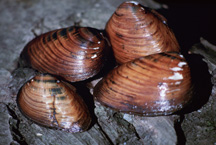You may be able to hang up your snorkel and flippers. Dutch researchers have found that even rare and endangered animals leave enough DNA in their freshwater ecosystems to be detected in even small amounts of water from that ecosystem. (As little as 15 milliliters, or about a tablespoon.)
This makes DNA analysis much quicker and more thorough than electrofishing, or the ever-popular snorkel survey.
The study tested six different species, including both vertebrates and invertebrates. The team found that an animal’s DNA only persisted in the environment for about two weeks, so when the animal was removed, the DNA was soon gone too.
The catch: high-throughput DNA sequencing techniques are required.
The paper will be published in the journal Molecular Ecology. The entire article is available with a subscription, or for a fee, here.
Or you can read the ScienceDaily report on the paper, here.
Coincidentally, a French team seems to have come to a similar conclusion. Their paper is in PLoS ONE and is open access. Read it here.
Photo: Federally endangered clubshell mussel, photo by Craig Stihler, courtesy of US Fish and Wildlife Service

